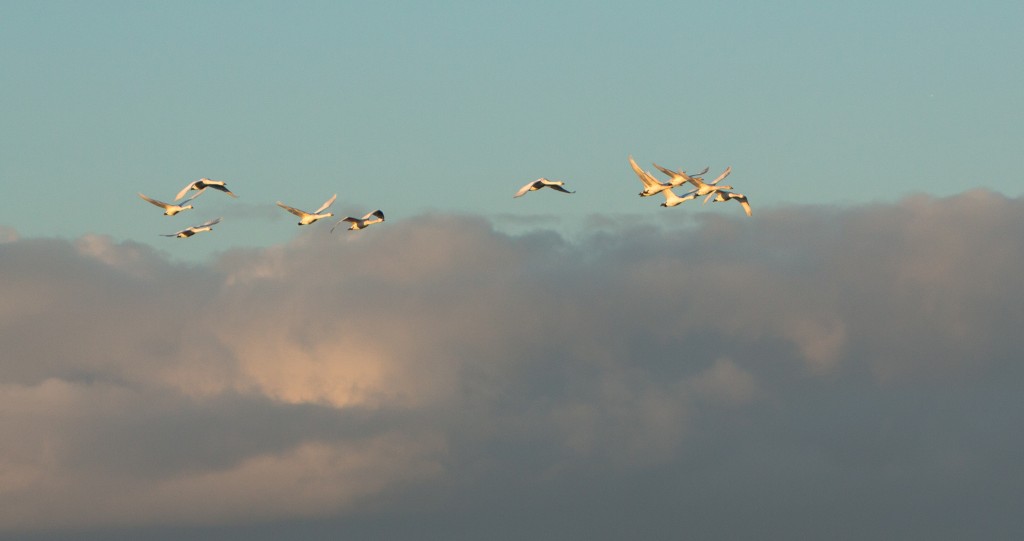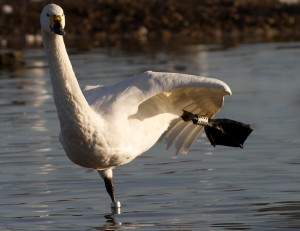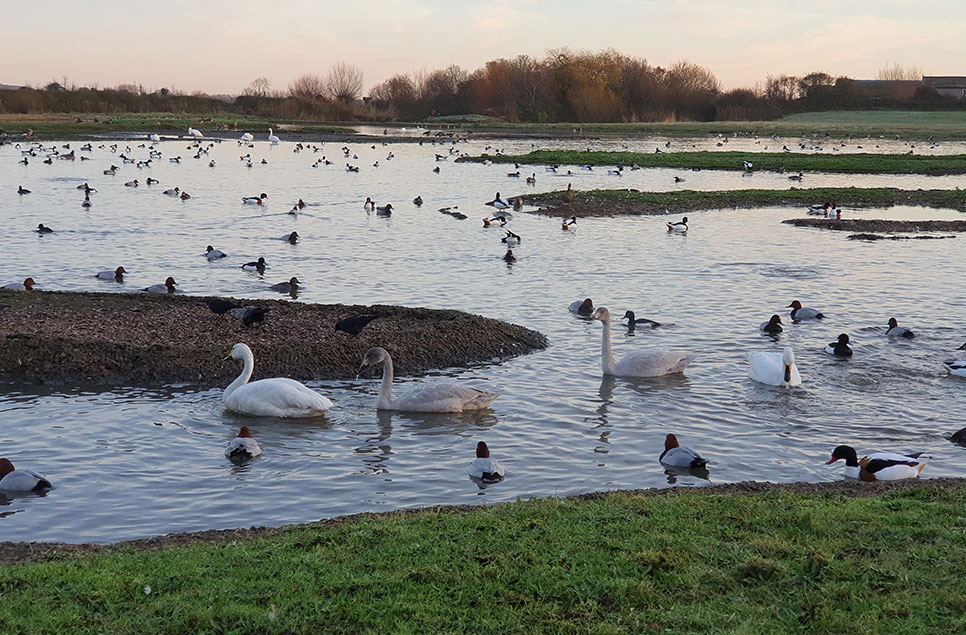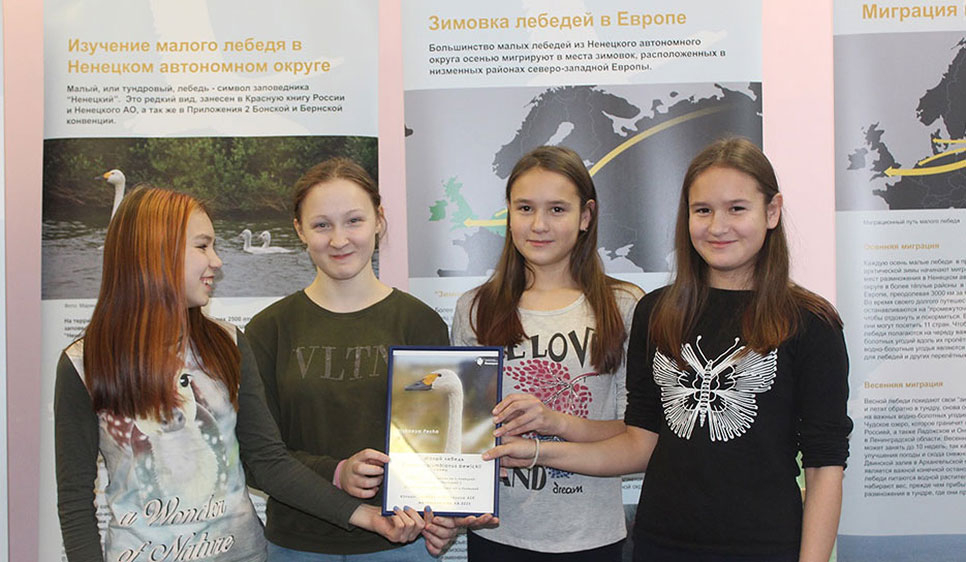Spring migration underway!
The first 70 Bewick’s swans have left Slimbridge for arctic Russia, embarking on a migration that may cover 2,500 miles and taking them up to 8 weeks to complete. These swans made the most of calm, clear evenings last Friday and again last night to leave. During their journey, they will stop several times at ‘staging posts’ on the continent and many will rest and re-fuel on the White Sea next to the western Russia coastline before embarking on the final stages of their trip.

There are now 68 Bewick’s left on the reserve and they have been exhibiting typicalpre-migratory behaviour, undertaking practice flights in large groups which has been quite spectacular to see, and of course resting up too. Migration has been triggered by the lengthening days and has certainly been encouraged by those westerly winds.

It is at this time that we ask for keen eyes across Europe to keep a look out for coded leg rings which are fitted to a number of the swans enabling them to be identifiable on their migration. If you see one of our ringed swans, please send your sightings to colourmarkedswans@wwt.org.uk and you will receive a life-history of your bird in return! We always like to know how the swans are getting on once they leave WWT reserves. More migration news to follow!
As an aside, WWT staff recently went to the US to attend the 5th International Swan Symposium. Swan experts and enthusiasts from all over the world gathered in Easton, on the shores of Chesapeake Bay in Maryland, to discuss the latest in swan research, conservation, management and protection at a joint conference of The Trumpeter Swan Society and the Wetlands International/IUCN SSC Swan Specialists Group.
The conference featured three days of contributed scientific papers, posters and workshops! It was fantastic to see representation from over 18 countries, including from most of the Bewick’s and Whooper swans’ range states in Europe. There were many highlights including the official recognition of WWT as co-ordinator of the UN’s Afican-Eurasian Waterbird Agreement International Expert Group for the Bewick’s swan. This group aims to co-ordinate the implementation of an action plan which aims to halt the ongoing population decline, and if possible, begin its recovery. As many of you may know, the number of Northwest European Bewick’s has plummeted from 29,000 birds in the mid-1990s to around 18,000 birds in 2010. During a workshop about implementation of the action plan, we updated each other on progress made so far and discussed future activities such as the next international swan census (for both Bewick’s and Icelandic Whooper swans) which will happen across Europe in 2015. Although much progress has been made there is still plenty more to do!
Eileen Rees (WWT's Head of UK Waterbird Conservation) was also officially recognised as the new Chair of the Wetlands International/IUCN-SSC Swan Specialist Group – reprising a role which she undertook previously from 1995–2001. It’s great to see WWT maintaining a central role in swan conservation globally.


